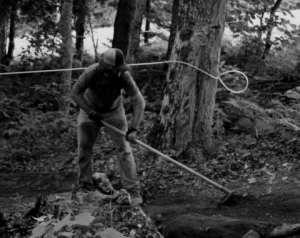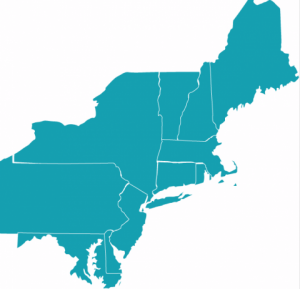
Trail diversity is important on multiple levels. On one hand easy trails need to be developed as gateways to the sport – family memberships are way up and more riders are seeking clinics/easy trails to ride. On the other hand, riding needs to incorporate advanced options that may not be appropriate for all riders. From a statewide perspective this balance is alive and well. Chapters adopting a building style may lead to a local perspective that trail diversity has been lost.
There are a number of factors influencing this conversation: demand for easy trail, the amount of existing hard terrain, chapter growth through new riders, utilizing sustainable building practices and state land building requirements to name only a few.
The elephant in the room is that the trails that require the most grit are those that are most often not mapping/advertised due to nuanced landowner agreements – this is the chapter’s prerogative and VMBA supports these relationships. VMBA chapters have 100% autonomy over the type of trails they build and who builds them on private land.
In short, the responses from over 300 riders highlight evenly split perspectives relative to what type of trails we need to build. Riders do have a say in how this all plays out. Getting involved with your local chapter is the best way to get your voice heard.
In the meantime, here are the top 5 ways to help ensure trail diversity in Vermont:
- Play a role in the chapter’s trail planning at the BOD level
- Participate in trail days
- Respectfully share your opinion when asked to fill out a survey
- Attend chapter events
- Develop a relationship with a private landowner and build

We live within a 10 hour drive of over 80 million people. Vermont is a place to slow down, reconnect and rejuvenate for many nonresidents. This reality comes with a mixed bag of concern and opportunity. Last fall, VMBA asked if you would support the association pursuing relationships with regional organizations to encourage more support for the trails. Over 90% of you were in favor and VMBA took action.
VMBA is in the process of launching the Northeast Membership Alliance comprised of riders from JORBA (Jersey), CLIMB (Long Island), Barkeaters (Lake Placid), SMBA (Saratoga) and Valley Mountain Bikers (Philly). NEMBA is currently in the process of reviewing their membership process.
Here’s what we know – out of state riders travel to VT to ride 6 or more times every year. The idea is to ensure that making a contribution to riding in Vermont is clear and easy. We recognize that this program may be met with varying levels of appreciation. The reality is the traffic is already here and this program will help us communicate with more riders about how they can be supportive. More importantly, we can direct more traffic to the locations we want to advertise.
Here’s the plan – VMBA is working with the state and chapters to keep projects loaded in the queue and being constructed. Trails on state land will be mapped/advertised. Visiting riders in these areas will visit local businesses that will, ideally, become local chapter sponsors helping to drive the cycle for additional projects. The goal is to preserve our sensitive areas by creating diverse and attractive alternatives on state land.
VMBA will continue working with the state to develop mutually beneficial, formal relationships between chapters and private land landowners. Working both ends of the access/building equation allows us to thoughtfully embrace the sport’s growing popularity.
